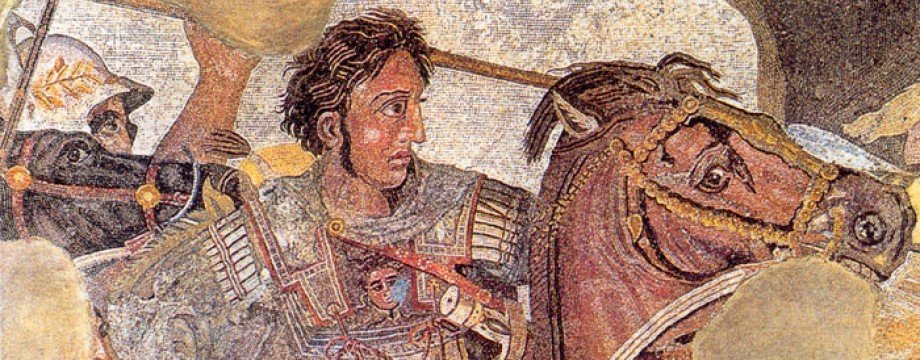Daily Diodorus
Vol. VIII. Book XVII Ch. 24-27 (Loeb Classical Library)
Read the other posts in this series here
The Headlines
Alexander Restores Ada to her Throne
Ada Adopts Alexander as her Son
Alexander Lays Siege to Halicarnassus
Memnon Breaks the Siege
[Correction: In earlier editions of the paper we incorrectly said that Memnon broke the Macedonian siege. At the time of writing it looked like he had. After the paper went to press, however, the Macedonian veterans made their decisive intervention in favour of Alexander. The man responsible for this error has been executed]
Halicarnassus Falls; Memnon Flees to Cos
Halicarnassus Razed
The Story
Upon hearing that Memnon was in Halicarnassus, Alexander sent ‘his siege engines and provisions’ to the city via sea. As the ships set off, he and his army began their march through south-western Asia Minor ‘winning over the cities that lay on his route by kind treatment’.
Alexander’s march took him out of Lydia and into Caria. While there, he met Ada its deposed queen.
Ada belonged to the Hecatomnid dynasty. One of her brothers was named Mausolus. When he died (c. 353 B.C.) his sister-wife Artemisia II ordered a great tomb to be built for him. The mausoleum was so magnificent it became one of the wonders of the ancient world.
Ada asked Alexander to restore her to power. He did so. She must have been a popular figure as Diodorus says that Alexander ‘won the loyal support of the Carians by the favour that he bestowed on [her]’.
Arriving outside Halicarnassus, Alexander set up camp. His siege engines having already arrived he laid siege to the city. Here is how it unfolded.
One Alexander began just as he did at Miletus - with continual assaults carried out by ‘relays of attackers’.
Two Diodorus says, that at a later - though unspecified - point, Alexander ‘brought up all sorts of engines of war, filled in the trenches in front of the city with the aid of sheds to protect the workers, and rocked the towers and the curtains between them with his battering rams’.
Three ‘Whenever he overthrew a portion of the wall’ Alexander sent men in to force their way into Halicarnassus itself. This strategy, however, was unsuccessful as Memnon was able to repel the attacks.
Four Memnon did not simply wait for the Macedonian soldiers to come. At night, he sent men out of the city with orders to set fire to the siege engines. This led to fierce fighting between the two sides. Diodorus says that the Macedonians were the better fighters ‘but the Persians had the advantage of numbers and… fire power’: as they attacked on the ground, Persians on the wall shot arrows at the Macedonians.
Five As the fighting continued men on both sides cheered their comrades on.
Six Meanwhile, Macedonian soldiers did their best to put out the fires on the siege engines. Behind the crumbling city walls, Persians hastily built secondary walls - stronger than the first - in an effort to thwart the Macedonian attack.
Seven As Memnon directed operations from within Halicarnassus, his commanders joined their men on ‘the front line and offered great rewards to those who distinguished themselves’.
Eight Both sides had a great ‘desire for victory’, and the fighting was fierce and bloody. Whenever any soldier seemed to be ‘on the point of yielding’ he was ‘put in heart by the appeals of [his] officers’ and thus ‘renewed in spirit’.
Nine As the battle raged, two towers fell and two curtain walls were pulled down.
Ten It was night time when some Macedonian soldiers under Perdiccas’ command got drunk and ‘made a wild… attack’ on the city. A Persian detachment sallied out and fell upon them. The Macedonians were routed.
Eleven The mêlée was noticed by other Macedonian soldiers who rushed to their comrades’ support. Before long, Alexander himself arrived at the scene of the fighting. The Persians were forced back and retreated into the city.
Twelve In accordance with the rules of war, Alexander had a herald ask the Persians for a truce so that the bodies of the Macedonian dead could be recovered. Two Athenians (Diodorus names them as Ephialtes and and Thrasybulus) who were working for the Persians advised Memnon against granting the truce but he gave permission for the bodies to be taken.
Thirteen At the next council of commanders, Ephialtes recommended that a counter-attack be launched. Seeing ‘that Ephialtes was eager to prove himself and, having great hopes of him because of his courage and bodily strength’ Memnon gave permission for the attack.
Fourteen Ephialtes left the city at daybreak with 2,000 men. To half he gave torches. The other half were formed up to fight the Macedonians.
Fifteen The Persian phalanx met the enemy as their comrades set fire to the siege engines ‘causing a great conflagration to flame up at once’.
Sixteen Alexander responded by dividing his army in three. The best fighters were placed at the front, ‘picked men’ in the middle, and another section of good fighters at the back. Men were also sent to put out the fires.
Seventeen The Macedonians marched forward and another fierce battle ensued. Diodorus tells us that the Macedonians stopped the fires from spreading but that ‘Ephialtes’s men had the advantage in the battle’. Once again they were greatly helped by Persians on a (replacement) wall who showered the Macedonians with missiles.
Eighteen Diodorus reports that Ephialtes personally killed many in hand-to-hand combat. Perhaps the real damage, though, was done by the missile throwers who not only claimed many victims but forced the surviving Macedonians to recoil ‘before the thick fire of missiles’.
Nineteen No doubt perceiving that victory was now there for the taking, Memnon came out of the city and ‘threw himself into the battle with heavy reinforcements’. Things were looking extremely bad for the Macedonians, so bad in fact, that ‘even Alexander found himself quite helpless’.
Twenty But just when all seemed lost for the Macedonian king, his veterans - men who were technically too old to fight - decided that enough was enough. The young pups were clearly not capable of getting the job done so they might as well. They ‘closed ranks’ and ‘confronted the foe, who thought himself already victorious’.
Twenty-One What happened next? I think you can guess. The veterans got stuck in. They killed Ephialtes as well as many others’ and ‘forced the rest to take refuge in the city’.
Twenty-Two It was dark when the Macedonians pushed forward and entered Halicarnassus. The Halicarnassians must have thought that this was it; the end of the city and their lives. But even as the Macedonians broke in, a trumpeter sounded the retreat. Alexander’s army withdrew to camp.
Twenty-Three That night, Memnon held another council with his senior officers. They decided to abandon Halicarnassus. A detachment was left in the city’s acropolis, though, while the rest of the army sailed to Cos.
Twenty-Four Alexander did not find out what had happened until daybreak. He destroyed the city and laid siege to the citadel. At the same time he sent a detachment ‘into the interior [of Caria] with orders to subdue the neighbouring tribes’.
Twenty-Five Diodorus states that ‘the whole region as far as greater Phrygia’ was subdued.
Twenty-Six As for Alexander, Diodorus doesn’t say what happened to the citadel just that the king ‘overran the littoral [i.e. coastline] as far as Cilicia, acquiring many cities and actively storming and reducing the strong points’. Rather annoyingly, he concludes by saying that one of those strong points was taken ‘with such a curious reversal of fortune that the account of it cannot be omitted’. Which he then does.
Comments
The appearance of Ada is a lovely interlude as Alexander marches towards his second siege. One of the headlines above states that she adopted him as her son. This comes from Arrian rather than Diodorus. It is said that Ada sent her new charge delicacies and even a cook although Alexander declined his lavish services, preferring a simpler diet.
Regarding the siege it surely shows men at their best and worst. On the one hand we see them fighting bravely for the sake of glory. Then there is Memnon who rather sportingly allows Alexander to retrieve his dead. And Alexander himself refusing to let his men sack Halicarnassus at the end. On the other hand, though, we have Macedonian discipline breaking down when Perdiccas’ soldiers not only get drunk but decide to attack the city!
If I forget all else, though, the one thing that I am sure I will remember about this siege is the decisive intervention of Alexander’s veterans. Men who were, let me say again, technically too old to fight. Let no one ever say again that old people have nothing to contribute to society.
To be fair, these men were more likely in their 40s than 60s or 70s (though I have to admit I don’t know the cut-off age for being in the Macedonian army). Their precise age, though, is besides the point. The fact is, whatever age they were, despite being regarded as too old for the field of battle, they not only entered it but conquered it.
I can only guess at Alexander’s emotions on the night after the siege ended. Of course he would have been happy that Halicarnassus had now fallen but might he not have been a bit annoyed - even if just inwardly - at the fact that it was his father’s men who had made the critical difference?

Like this:
Like Loading...




